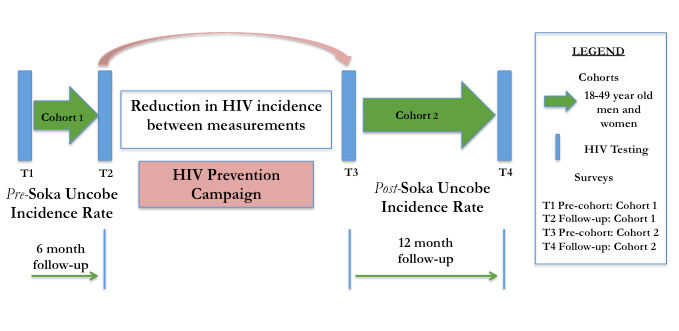Study Design
SHIMS is a serial cohort study design with two independently selected, household-based, nationally representative longitudinal cohorts [Figure 1].
The first longitudinal cohort, Cohort 1, identifies the population-level, baseline HIV incidence rate over a six-month period, prior to Soka Uncobe and the scale-up of other combination prevention services. The second longitudinal cohort, Cohort 2, will identify the population-level HIV incidence rate over a 12-month period, after Soka Uncobe and scale-up of other combination prevention services.
SHIMS Study Design

At Time 1 (T1), a pre-cohort survey was conducted among a nationally-representative cross-sectional group of men and women, ages 18-49. Self-reported male circumcision prevalence was obtained during the pre-cohort survey interview. Home-based, HIV counseling and testing was also conducted and provided a pre-cohort HIV prevalence measure. Pre-cohort survey participants who tested at T1 as HIV-uninfected were recruited to participate in Cohort 1.
At Time 2 (T2), approximately six months after recruitment, a follow-up survey was conducted among Cohort 1 participants. Home-based, HIV counseling and testing was also conducted and provided a HIV incidence rate among persons who tested HIV-positive at T2. A similar set of procedures will be conducted with Cohort 2 at Time 3 and 4.
